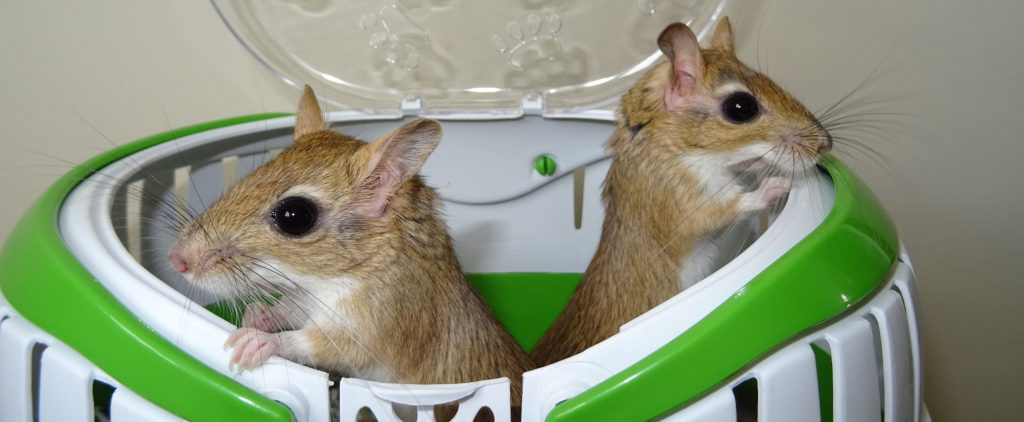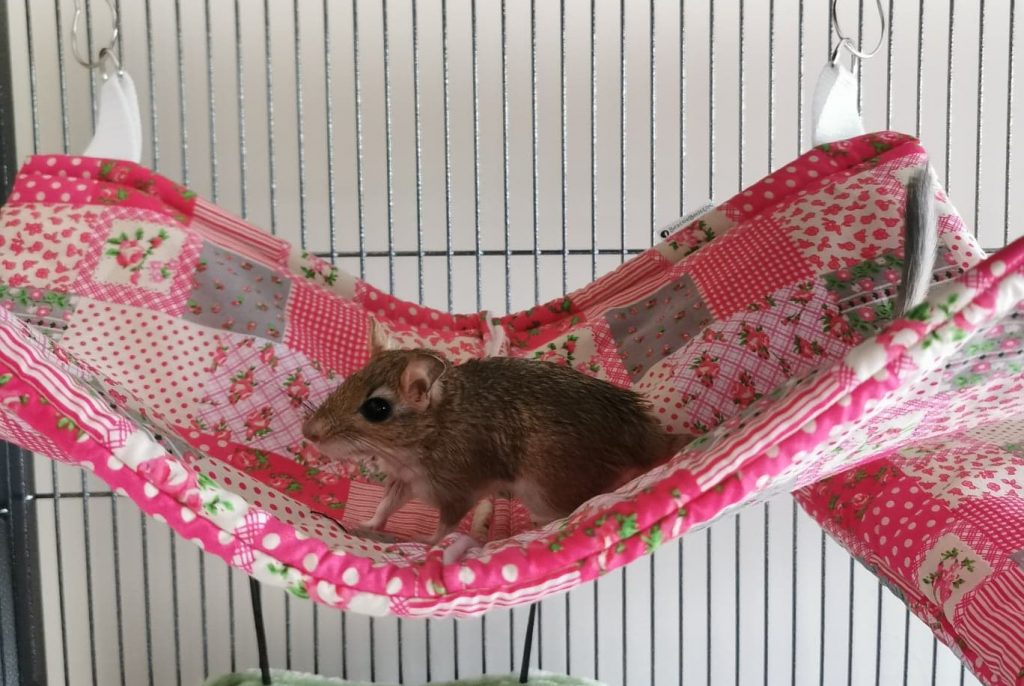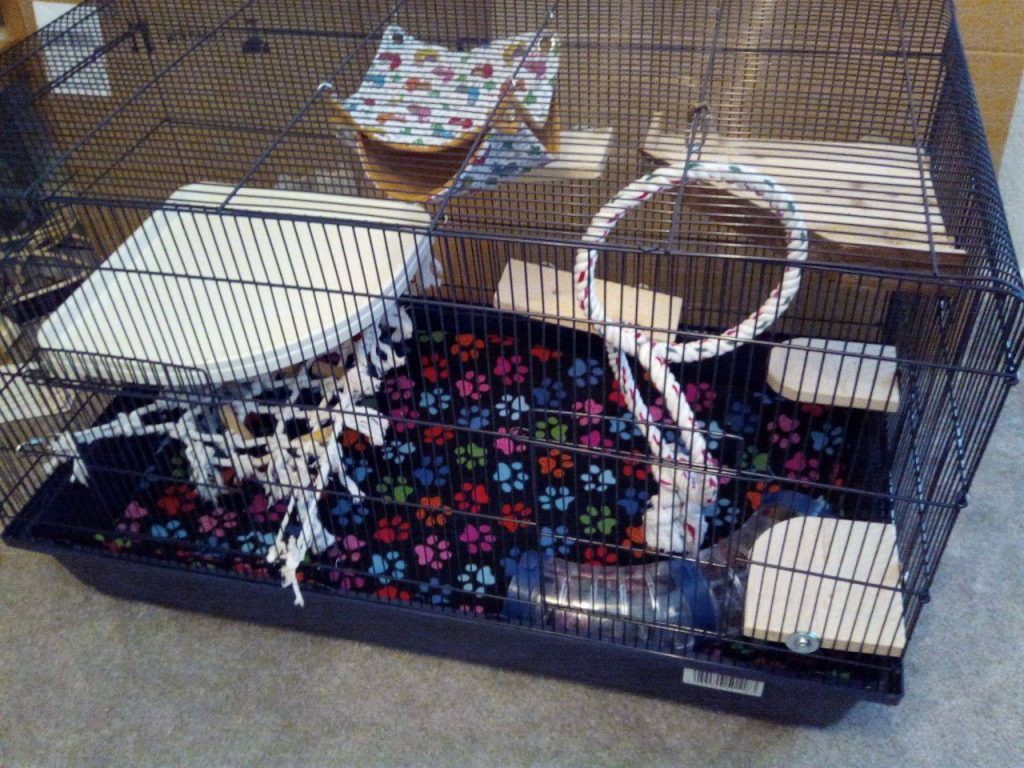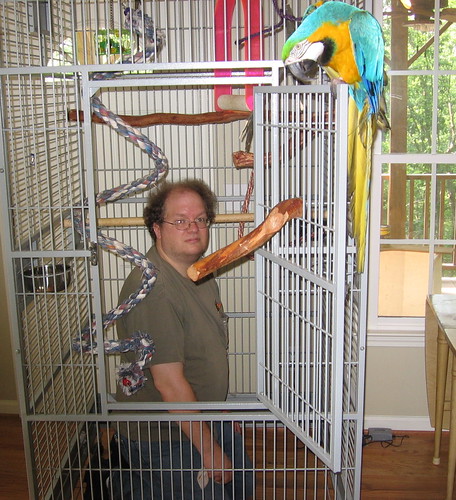If you are considering getting yourself a fine pair of Persian Jirds – you are sure to ask what is the best cage for them.
As they are little know in the pet world – there is some debate over what type of enclosure they should have and which things they like best.

Many old documents pointed to a very gerbil-like enclosure – only bigger. There is plenty of literature commenting on their fondness for digging – however, they are also know for their rock-hopping characters and their love of high places and leaping skills.
Are Persian Jirds Just Like Gerbils?
Many have started with a combination of a giant gerbil tank and topper combination they look wrong in a tank alone – and the speed that they move at would really warrant a 6 foot tank minimum – not many of those about I can tell you.
Many a picture online have we found of a homemade topper of humungus proportions.
However, do be aware of the reduced height in a tank and the reduced ventilation – two things the Persian Jirds don’t do well with.
A giant tank will certainly keep in a lot of the mess that jirds can make – and they can’t chew out the cage bottom of a tank for sure – but they do have a huge number of other limitations.
Also, people are talking about the giant plastic indoor rabbit enclosures that are a great size and have a decent height on them – but although these are much lighter than the glass tanks and also with better ventilation – they still don’t offer Persians the structure they need for leaping about the place. Yes, you can attach a hammock to the roof and maybe hang a wheel upside-down – but you can’t create those small ledges which they love hopping between.
Because of this hopping about – more recently some keepers have started looking at the more degu-like enclosures – where there is ample space in a wide but also tall sturdy cage – needs to be for the strength of their teeth if you have ever seen one chew!

How Big Should A Persian Jird Cage Be?
Most people assume the enclosure should be at least 80cm wide and at least 50cm high for a single or pair – bigger where possible in both width and height – especially in height as they just LOVE to leap and their wheel needs to be at least 28″ so this must clear the top and bottom anyway.
Critter Nations are nice and wide – but also nice and deep – not something always found in rodent cages: most cages are made to fit on a sideboard or normal human furniture. The best cages are those that suit the animal – not your house – so do certainly consider the larger cages with their own legs, stands or wheels!
Some people have looked at indoor aviaries for sure – and by all means look into the bird world for cage ideas – but please consider the strength and width of the bars.
We have had jird literally rip the thinner bars off the cage if they find themselves an easy chew point – and young jirds get their heads through the wider parrot sized bar gaps.
Also, some bird cages have a slide out tray in the base which could allow for easy chewing jirds can whizz through plastic (like a normal gerbil on steroids) and some cages have feed container holes so you can top up the birds food without opening the cage – no good for rodents! So do consider all aspects of the cage – not just the overall size.

How Many Persian Jirds Can Live In One Cage?
Persians jirds love living in family groups – so you can have as many jirds in a cage as will live together happily – however as with all domestic pets – this all depends on the environment. A family of 6 people can’t live happily in a 1 bedroom apartment.
Same with Persians – if you have a single or pair of Persian jirds in a cage around 3ft wide, 2ft high and 2ft deep with plenty of ledges and a wheel – this would be suitable for them along with free-running time. This works out about 6 square feet each jird – however a cage 4ft wide, 6ft high and 2ft deep would be better of course.
So, sticking to the same size ratios – if you have three or more adult Persian Jirds living together, then you need to go big – with an indoor aviary or large cage with additional topper.
Something that gives them all around 6+ square feet each in size – so aim for 18+ with 3 jirds so say 3ft wide x 3ft high x 2ft deep and at least 3ft wide x 4ft high and 2ft deep for 4 jirds.
No scrimping on size here!


Can Persian Jirds Live In Tanks?
Well, now – that depends on your definition of tank? But in practice in a home – a converted aquarium isn’t a good idea at all. However, if you invest in a huge glass enclosure with generous ventilation instead – more so.
The problem with tanks is that they can prevent suitable air flow and can lead to moist internal conditions if near a heat source, in the sun, have too many residents inside and moist food or substate throughout.
Luckily, jirds need huge enclosures – so if you were considering a tank as such I am sure it would be of the larger vivarium-type enclosures – perhaps with multiple layers connected together. Or, perhaps, a large pet-shop type enclosure with plenty of height and ventilation panals to the rear. Both of which are used often and appear quite suitable in both size and air-flow.
In which case yes – a large glass-fronted enclosure – is certainly adapatable for Persian Jirds – and can make very cool bioactive or naturalistic enclosure.